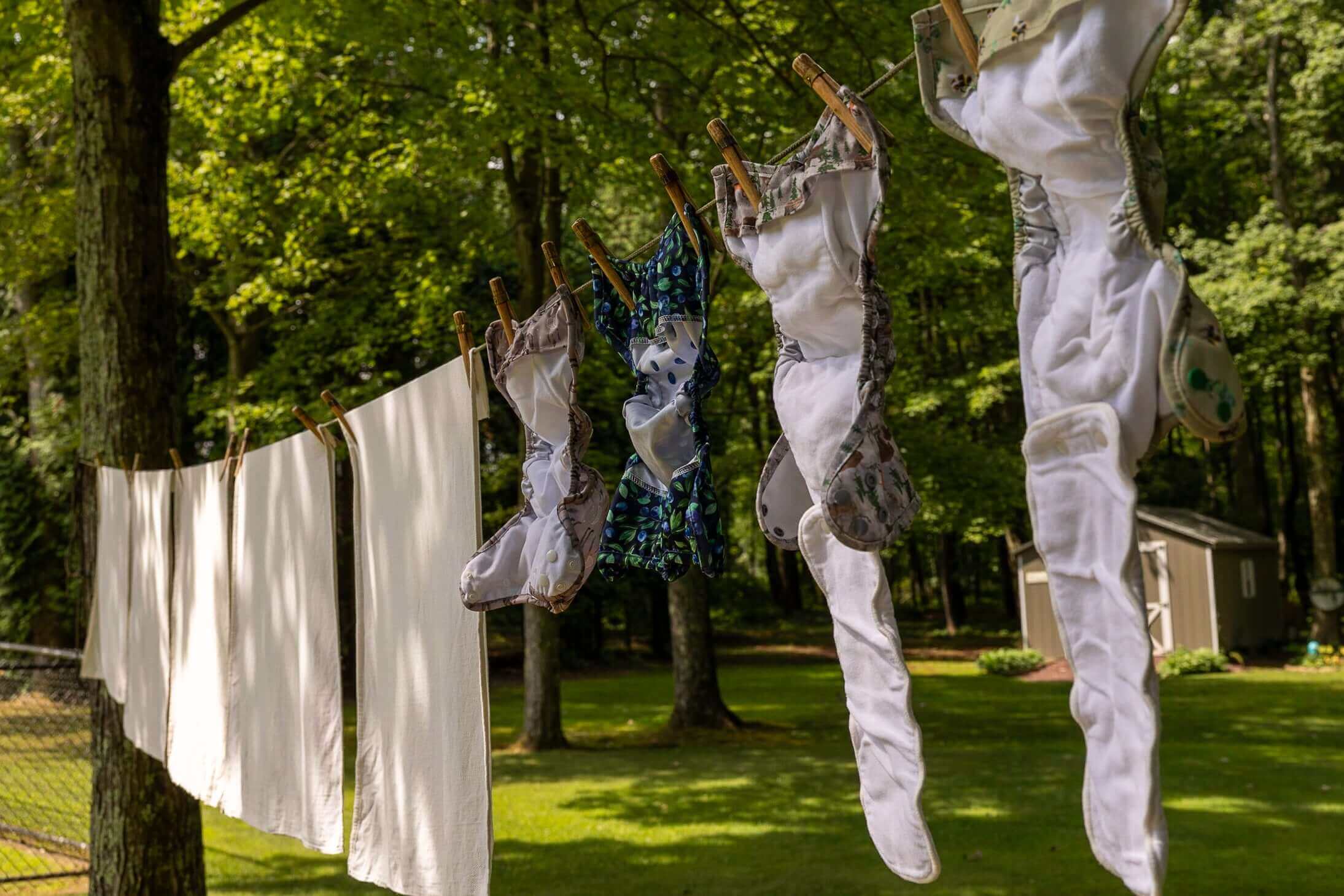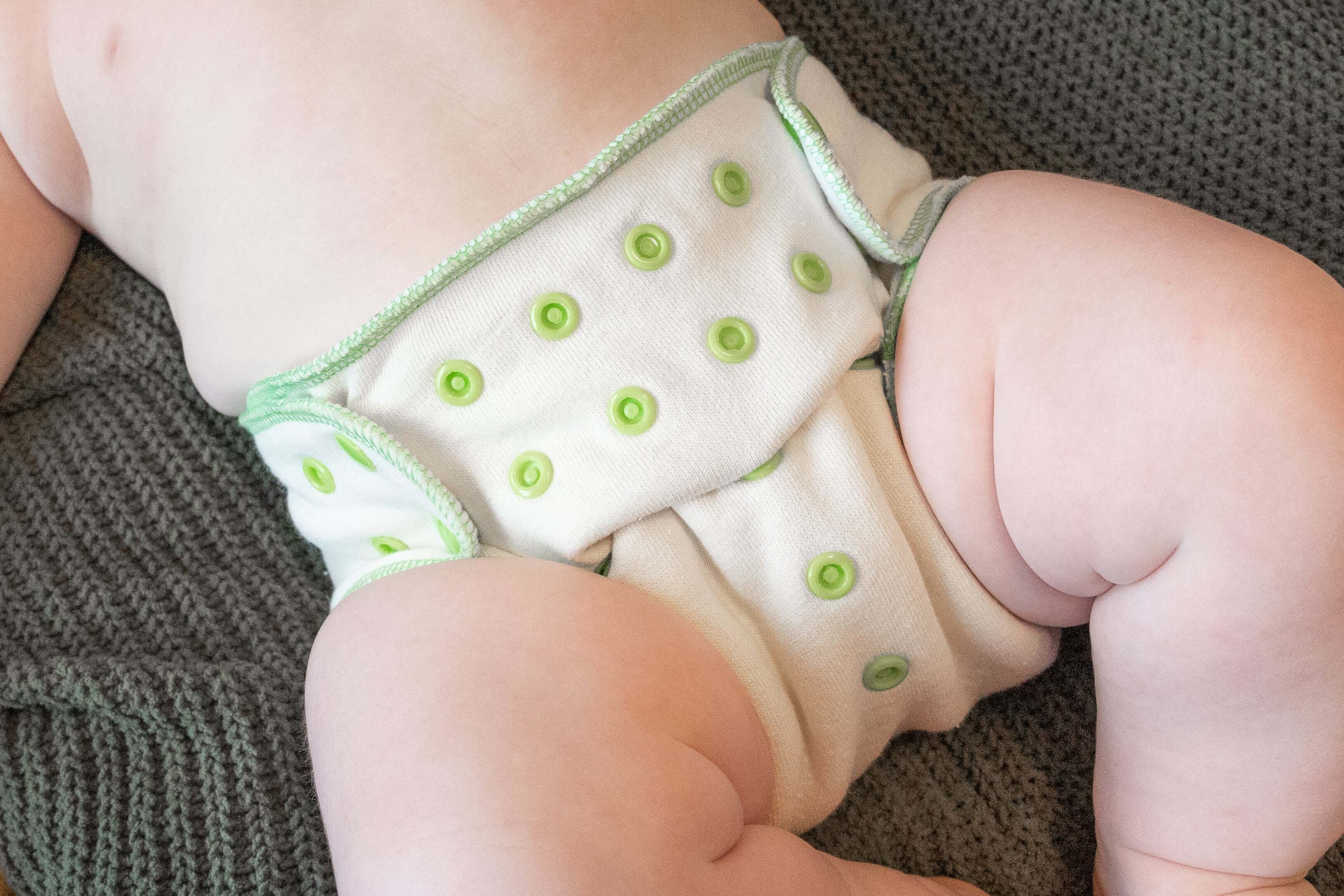
The Science of Cloth Diapers: Absorbency and Material Technology
The evolution of cloth diapers over the years has been a journey of innovation and sustainability. With advancements in materials science, something that is very dear to our heart here at Bayrli, today's cloth diapers are a far cry from their predecessors, offering unparalleled comfort and efficiency.
In this blog, we delve into the fabric technology that powers these eco-friendly alternatives, discussing materials such as microfiber, bamboo, and hemp in detail. We'll also explore best practices for washing and maintenance, underlining the significant strides made in the reusable diaper industry through dedicated research and material science advancements.
Understanding Diaper Fabrics: Microfiber, Bamboo, and Hemp
Microfiber
A marvel of modern textile technology, microfiber stands out for its superlative absorbency and quick-drying characteristics.
Microfiber inserts for cloth diapers are a modern solution for parents seeking an effective and eco-friendly alternative to disposable diapers. These inserts are made from a highly absorbent synthetic material, typically a blend of polyester and polyamide. Microfiber's high absorbency is due to its fine fibers, which are much thinner than a human hair. This allows the fabric to trap and hold liquid, making it an ideal material for diaper inserts.
Unlike traditional natural cloth diaper materials like cotton or bamboo, microfiber absorbs liquid quickly, providing excellent leak protection, especially for babies who flood their diaper very quickly. It's also relatively inexpensive and easy to find, making it a popular choice among cost-conscious parents. Microfiber inserts are used by placing them inside a diaper cover or a pocket diaper, where they absorb and retain baby’s waste.
Despite their advantages, microfiber inserts have some drawbacks. One significant con is that they can't be placed directly against the baby's skin. This is because microfiber is designed to pull moisture away, and when placed next to the skin, it can cause dryness and irritation. Therefore, they must be used with a liner or inside a pocket diaper.
Additionally, microfiber is prone to compression leaks, especially when the baby is sitting or lying down for extended periods. This means they may not be the best choice for overnight use or for heavy wetters. Another downside is that microfiber tends to hold onto odors more than natural fibers and requires more attention to washing.
Over time, they can also lose their absorbency due to the buildup of detergent residue, requiring routine stripping to maintain effectiveness. Despite these cons, microfiber inserts remain a popular choice due to their high absorbency and affordability, especially for daytime use.
Bamboo
As a naturally sourced material, bamboo is renowned for its antibacterial properties and unparalleled softness, making it a favorite among eco-conscious parents.
Bamboo inserts for cloth diapers are increasingly popular among parents looking for a natural, absorbent, and environmentally friendly option. Made from the fibers of the bamboo plant, these inserts, terries, flats, and prefolds, are known for their exceptional softness and breathability, making them ideal for babies with sensitive skin. Bamboo is a sustainable resource, growing quickly with minimal need for pesticides or fertilizers, which adds to its appeal for eco-conscious families.
One of the standout features of bamboo inserts is their natural antibacterial and antifungal properties, which help reduce diaper rash and odors. They absorb moisture effectively, though not as quickly as synthetic materials like microfiber, making them suitable for both daytime and nighttime use. Bamboo inserts can be placed directly against the baby’s skin or used in pocket diapers, offering versatility in how they are utilized.
However, bamboo inserts do have some drawbacks. They generally take longer to dry compared to synthetic materials, which can be a consideration for families without access to a dryer or living in humid climates.
In terms of cost, bamboo inserts are typically more expensive than their microfiber and cotton counterparts, which might be a significant factor for budget-conscious parents. Over time, bamboo fabric can become less soft and a bit stiffer, especially if line dried. Additionally, they may not be as durable as synthetic options, potentially leading to a shorter lifespan with frequent washing and use.
Despite these cons, many parents find the natural, gentle, and eco-friendly nature of bamboo inserts to be a compelling reason to choose them for their cloth diapering needs, especially for babies with sensitive skin or for those seeking a more sustainable diapering solution.
Hemp
Hemp inserts and diapers are the epitome of durability and absorbency, ideal for long-term use and heavy wetters.
Hemp inserts for cloth diapers are a highly durable and absorbent option for parents committed to sustainable and long-lasting diapering solutions. Made from the fibers of the hemp plant, these inserts are known for their exceptional strength and absorbency. Hemp is a highly sustainable crop, requiring little water and no pesticides to grow, making it an environmentally friendly choice.
The inserts are typically a blend of hemp and cotton, combining the durability and absorbency of hemp with the softness of cotton. We chose to blend our hemp inserts with organic cotton for an even more sustainable and earth friendly option. This blend results in a fabric that is less prone to shrinking and more effective at retaining its shape and absorbency over time compared to other natural fibers. Hemp inserts are slower to absorb moisture than microfiber or bamboo, but hold more liquid, making them an excellent choice for heavy wetters and for overnight use. They can be placed directly against the baby's skin or used inside pocket diapers. Hemp also makes a great choice for a fitted diaper that you can use for night time with your baby.
Despite their advantages, hemp inserts have some small downsides. They tend to be thicker and stiffer than other types of inserts, which might be less comfortable for some babies, especially when multiple layers are used for added absorbency.
Additionally, hemp inserts require multiple washes before reaching their full absorbency, known as the 'prepping' process. This could be inconvenient for parents who need them to be fully functional immediately. They also tend to be more expensive upfront compared to microfiber and bamboo inserts, though their durability can make them more cost-effective in the long run. Hemp inserts can take longer to dry, similar to bamboo, which can be a drawback in colder or more humid climates.
Despite these cons, hemp inserts are favored for their environmental sustainability, impressive absorbency, and durability, making them a preferred choice for many parents, especially for overnight use or for babies who are heavy wetters.
Absorbency and Comfort: The Core Qualities
In the realm of cloth diapering, the choice of fabric for inserts plays a crucial role in balancing absorbency and comfort. This balance is essential for effective diaper performance, ensuring that babies remain dry and comfortable, especially for important milestones like tummy time. Textile science offers insights into how different materials achieve this balance, each with its unique properties and performance characteristics.
Each material has its trade-offs between absorbency and comfort. Microfiber leads in absorbency but lags in direct-skin comfort, bamboo and cotton offer gentleness for sensitive skin but with moderate absorbency, and hemp stands out for heavy-duty absorbency but might compromise on softness and pliability. These characteristics dictate their suitability for different scenarios, such as daytime use, overnight protection, or for babies with sensitive skin.
Understanding these properties helps parents make informed choices about the most suitable fabric for their baby's needs, ensuring comfort while effectively preventing leaks.
Navigating Challenges: Durability and Longevity
Modern cloth diapers, particularly those of premium quality with leading warranties, exhibit remarkable durability and resilience, a testament to advances in textile technology and thoughtful design. These diapers are crafted to withstand the rigors of daily use, frequent washing, and the various stages of a child's growth, all while maintaining their functionality and aesthetic appeal.
The fabrics used in premium cloth diapers are selected for their strength and longevity. Materials like high-grade cotton, bamboo, and hemp are interwoven with synthetic fibers to create a blend that optimizes both durability and comfort. These fabrics resist wear, maintaining their shape and absorbency over time, a crucial factor considering the repeated washing and drying cycles they endure. Advanced weaves and knitting techniques ensure that the material remains soft and gentle against a baby's skin, without pilling or losing its texture.
In addition to the fabric quality, the construction of modern cloth diapers is a key factor in their durability. Reinforced stitching, secure snaps, and strong hook-and-loop fasteners are common features that enhance the diaper's lifespan. These fastening systems are designed to adjust as a baby grows, ensuring a snug and comfortable fit from infancy through toddlerhood. This adaptability not only makes them a cost-effective choice for parents but also contributes to the sustainability of the product.
Moreover, modern cloth diapers come with innovative features that extend their utility. Double gussets for extra leak protection, waterproof yet breathable outer layers, and adjustable absorbency options are all design advancements that make these diapers highly efficient and long-lasting. The attention to detail in these designs means that the diapers can often be used for subsequent children, further enhancing their value and reducing waste.
The wear and tear of modern, premium cloth diapers showcase the industry's commitment to quality and sustainability. These diapers are designed to endure, providing parents with a reliable, eco-friendly, and cost-effective diapering solution. Their resilience against wear, coupled with advanced features, make them a wise investment for environmentally conscious families seeking both performance and durability in their diapering choices.


